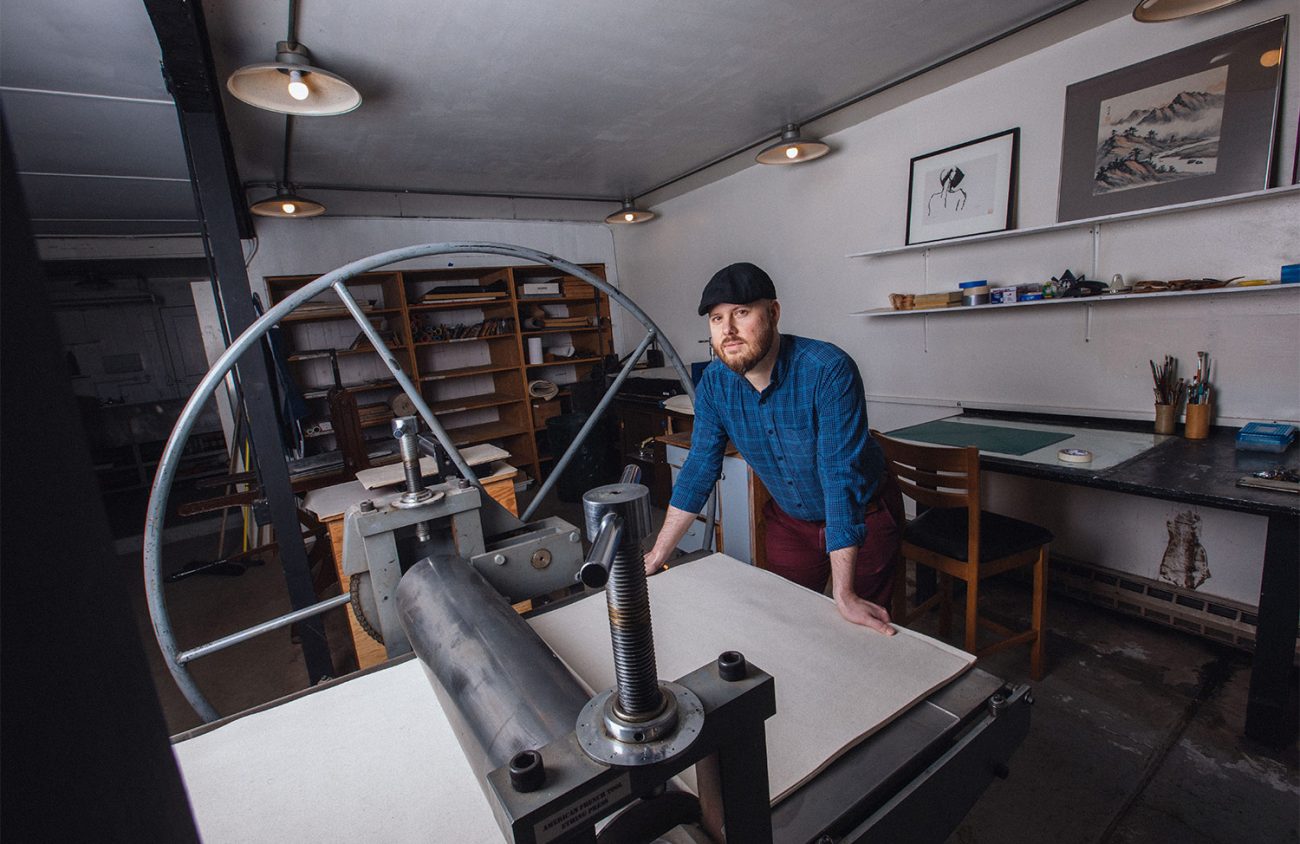“I’ve been thinking a lot about what ‘essential’ means,” says Michael Fisher, executive director of Maude Kerns Art Center.
It’s not the kind of statement he would have uttered in a pre-pandemic interview. But now he has taken to re-examining how the whole center operates.
March 16, 2020, was the day I realized things were not operating as usual. That morning, I had an interview for a job teaching art history at Lane Community College and then drove to Salem to review an art show at Hallie Ford Museum of Art. By the time I got back to Eugene, I learned that the show in Salem was going to shut down, and LCC would soon follow suit. I’d given a teaching demonstration for a job that was about to be retracted and reviewed art that could no longer be seen.
Every art business or organization I’ve talked to recently has had similar stories, though their ups and downs relate to the past year and nine months, not one day. John Weber, executive director of the Jordan Schnitzer Museum of Art, says his biggest challenge has been the “total unpredictability of the virus.” Even since its reopening this fall, the museum has been “constantly reassessing what can be done in person, and what should stay remote,” he says.
The JSMA’s communications manager, Debbie Williamson-Smith, says some of the museum’s biggest obstacles “have become opportunities.” For instance, the museum launched Matterport, “a 360-degree virtual tour experience that is the next best thing to being on site.” Her point of view seeing the glass half full regarding the virtual reality available through the museum’s website reflects an across-the-board embracing of digital technology.
Karin Clarke, owner of Karin Clarke Gallery, quickly jumped on board giving gallery tours via Facebook Live. But, she says, it took time getting used to having “a camera in my face.”
She did something else extraordinary at the beginning of 2021. She opened a second gallery — Karin Clarke at the Gordon — and hired new staff. It was highly stressful for a while, she admits, but the small shop at the Fifth Street Market expansion has proven successful at providing foot traffic to her larger, nearly 20-year-old gallery on Willamette.
Mike Bray is co-director, along with Chelsea Couch, of Ditch Projects in Springfield. He recalls giving artists a choice: postpone their scheduled exhibits or continue but without having opening receptions. Openings are highly social events where people gather to talk about and celebrate the art, and to just have a good time.
All the artists scheduled for shows chose to wait, Bray says.
This December, with empty slots in scheduling, the contemporary art gallery and work space organized and held its first ever Ditch Market. It featured 23 artists and art organizations, it was a great success, and Bray thinks it might become an annual event.
Maude Kerns Art Center board member Fred Tepfer says that after the center closed due to the initial mandate, Fisher, the executive director, made a “passionate case” to the board for not going dormant. Then in just three days’ time, Fisher and digital media coordinator Ben Davis (both Fisher and Davis started as interns at MKAC about 10 years ago) organized an entire show of about 80 artists on their website. It was the art center’s first entirely digital exhibit. Since then all the art in gallery exhibits is put online and made accessible to remote viewers.
Having to cancel Art in the Vineyard — twice — hit MKAC hard. The annual fundraising event provides more financial support than any other. The center, like other nonprofits in town, has in part managed to stay afloat by receiving assistance from organizations like the Oregon Cultural Trust and Oregon Arts Commission, as well as from private donors.
The key, says Fisher, is to remain flexible and responsive to change. “Plan A, plan B, plan C” has been a mantra of his throughout this past year. When one thing falls through, or something changes, it’s on to the next plan.
Perhaps the most visible loss for Eugene’s art scene this past year has been the cancellation of First Friday Artwalks. Those lively events have been absent through the majority of the pandemic. Jessica Watson, Lane Art Council’s First Friday Artwalk Coordinator, says they’re back now and with each venue operating at its own comfort level.
Lane Arts Council Executive Director Stacey Ray says she’s been hearing from people this past year. They tell her they’re feeling the loss. She says, after listening to them, she knows one thing for sure: Moving into 2022, “people are hungry” for shared experiences.
It was big news for Eugene Contemporary Art when it received a grant that allowed it to acquire the physical space on 8th Avenue for ANTI-AESTHETIC gallery. The grant was to last two years, but only one exhibition showed in the space before it had to shut down. And then ECA paid rent for six months, using their grant money, for a gallery they couldn’t use.
Something interesting happened, though, when ECA reopened. Rather than allowing walk-ins, they had people schedule appointments for 30 minutes at a time. The procedure was designed for safety concerns, but visitors always stayed the full 30 minutes, says ECA founder ECA Courtney Stubbert. Fewer people attended but those who did have had substantial experiences.
“Quality not quantity,” says Stubbert.
